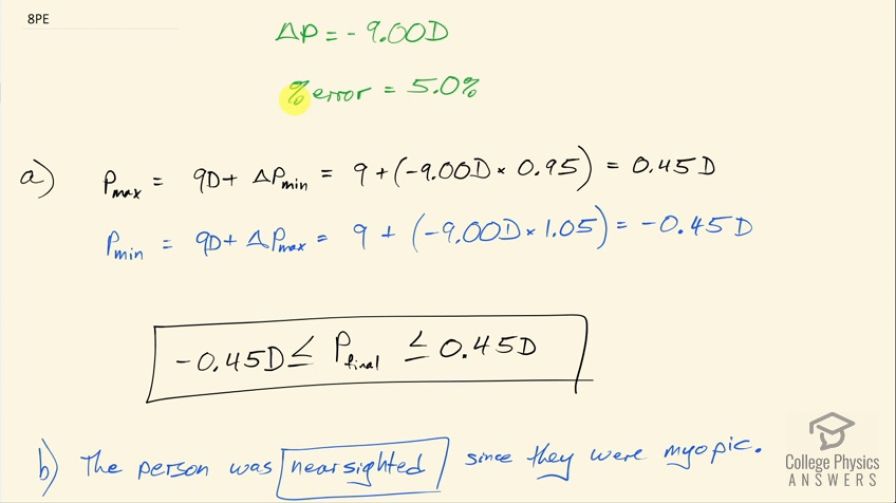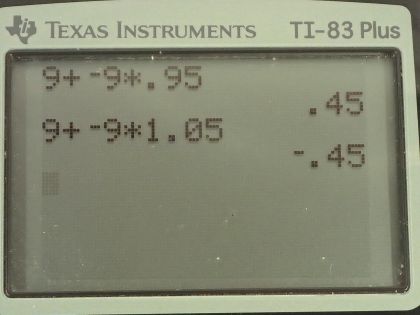Question
(a) A laser vision correction reshaping the cornea of a myopic patient reduces the power of his eye by 9.00 D, with a uncertainty in the final correction. What is the range of diopters for spectacle lenses that this person might need after LASIK procedure? (b) Was the person nearsighted or farsighted before the procedure? How do you know?
Final Answer
- The person was nearsighted since that is the meaning of myopic.
Solution video
OpenStax College Physics, Chapter 26, Problem 8 (Problems & Exercises)

vote with a rating of
votes with an average rating of
.
Calculator Screenshots
Video Transcript
This is College Physics Answers with Shaun Dychko. This person needs to have the power of their eye decreased by 9.00 diopters and the percent error in this surgery that does this correction is 5.0 percent so the question in part (a) is what power of glasses could the person possibly need after the procedure considering the amount of air that's involved? So this is the maximum power of glasses; this is not the maximum power of their eye because normal vision is a power of 50.0 diopters but this is just the amount in excess of 50 that might occur and it's the amount that the glasses need to correct to get to the normal vision of 50.0 diopters. So the maximum amount by which their power of their eye will be above normal is the initial 9.00 diopters that it has because that's the goal is to decrease the power by 9.00 diopters that means their power must be 9.00 diopters too much. So they will have 9.00 diopters to begin with plus the smallest change or in other words, a decrease in 9.00 diopters multiplied by 95 percent because this is 9.00 diopters minus 5.0 percent. This works out to 0.45 diopters could be the final amount by which their sight is too powerful or the minimum power this is the amount below normal will be the 9.00 diopters plus the maximum possible decrease after the procedure and so that's 9.00 diopters plus the 9.00 diopter decrease times 1.05 so this is the maximum possible decrease within the error given and that is negative 0.45 diopters. So the final power needed from the glasses is negative 0.45 diopters up to positive 0.45 diopters. Then part (b) asks was this person near-sighted or far-sighted initially and they were myopic and the word 'myopic' means near-sighted so they can see near and cannot see far.
